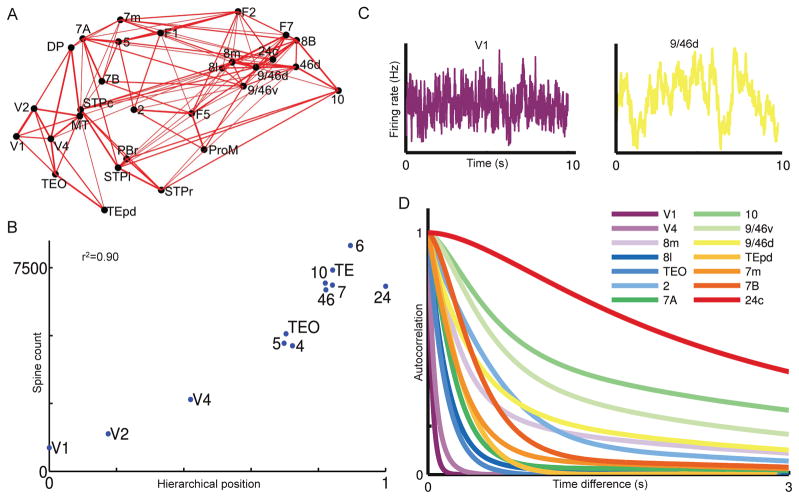Figure 3.
Hierarchy of timescales in an anatomically-constrained dynamical model of macaque cortex. (A) Connections between 29 areas in the macaque cortex. Strong connections are indicated by lines, with line thickness determined by connection strength. (B) The number of spines on the basal dendrites of pyramidal cells in an area is strongly correlated with the area’s hierarchical position determined by the pattern of laminar projections. This is incorporated into the model, in which the excitation input strength is larger in areas higher in the hierarchy. (C) Stochastic activity fluctuations are fast in Area V1 but much slower in dorsolateral prefrontal cortex area 9/64d. (D) Autocorrelation functions in response to white-noise input to area V1, from which a dominant time constant was extracted for each cortical area. The model shows a hierarchy of timescales, with sensory areas and association areas characterized by short versus long timescales, respectively. Reproduced with permission from [11••].

